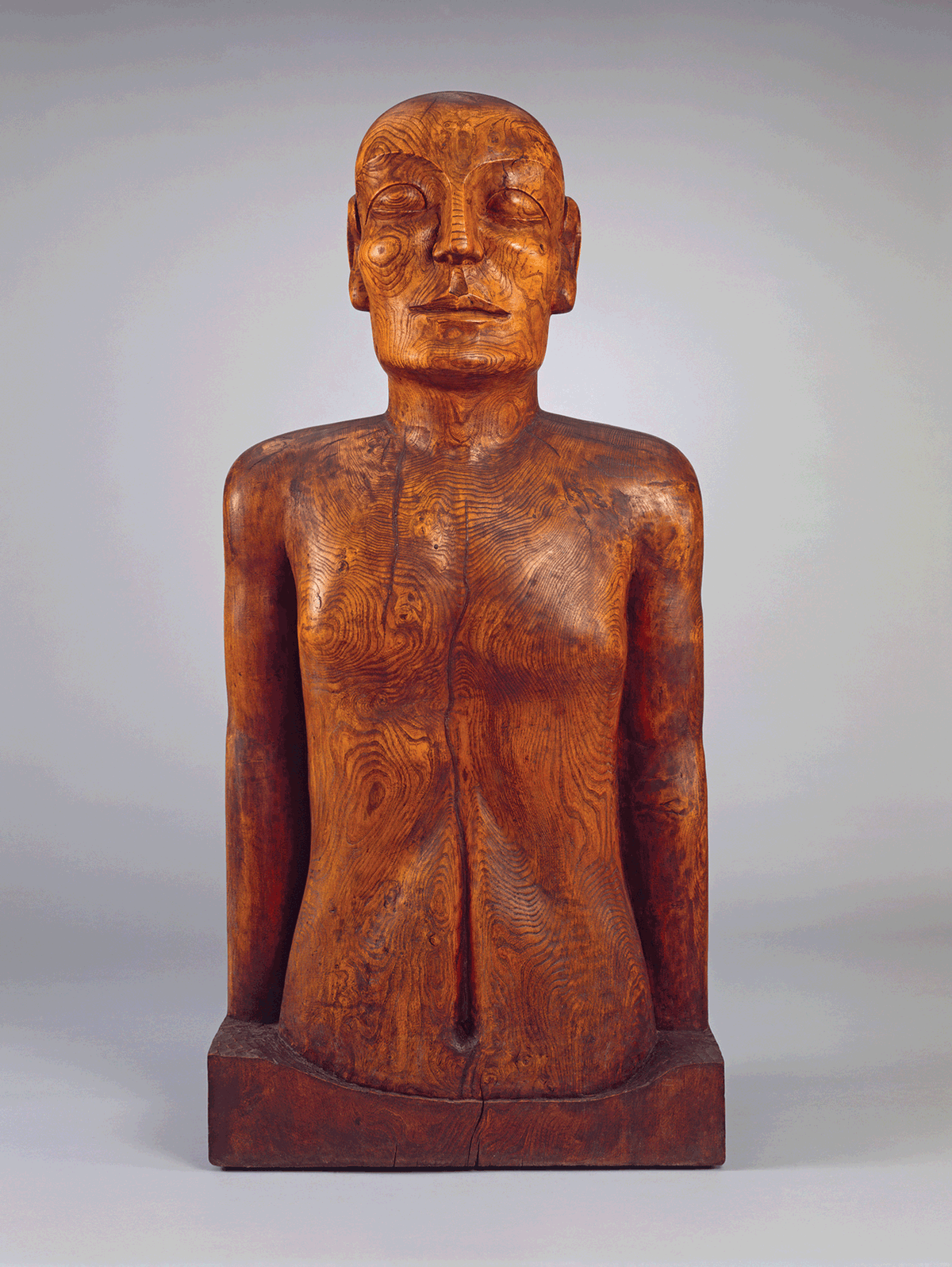In 1946, on the subject of “Discovering Arts” for the BBC series Calling the West Indies, the Jamaican-born Modernist sculptor, poet, essayist and broadcaster Ronald Clive Moody (1900-84) posited: “Every self-respecting family has a black sheep, and I have a sneaking feeling that it is from this pool of black sheep that artists are drawn. Now, how does one reach the rank and status of a black sheep? By daring to revolt against the rules which society accepts as calculated to make you a worthy member of it. Your family acts as an agent of that society and tries to impress its rules upon you so that you will become a success—another feather in the family cap.”
From dentist to sculptor
Twenty-three years before, Harold Moody—a Jamaican physician and founder in 1931 of the London-based League of Coloured Peoples, an influential lobbying group for race relations—was at Paddington Station to greet his youngest brother Ronald, an incoming student at the King’s College Royal Dental Hospital. Ronald qualified by 1930 and begrudgingly worked in his brother’s practice to support life in the British metropolis. His formal employment, however, afforded him access to spare plasticine and plaster to experiment in making his first shapes and objects.
In 1928, as Moody recalled two decades later, he took a fortuitous left turn into the British Museum’s Egyptian galleries: “I often went to the British Museum, National Gallery and other Art Galleries, coming away I am afraid, more puzzled than pleased, until one day I discovered Egyptian sculpture all for myself. It was an amazing experience and I haunted that room for a long time after. The use of the material, the massive forms treated with such amazing skill, sensitiveness, delicacy and daring, and lastly, the spirit behind it was strangely sympathetic. From that moment I felt I wanted to do sculpture. But how? I knew nothing about it and until now hardly thought of myself as an artist.”
Enigmatic majesty
After four months of trial and error, Moody completed his first wood carving, Wohin (1935), with Johanaan (which he began sculpting from the head) realised one year later, followed by Midonz (1937) and Tacet (1938). All are made in elm, a remarkably shock-resistant and durable material, which, for Moody, encapsulated the enigmatic majesty of his sculptures’ ancient cultural sources. Moody recalled: “I knew in the very depths of my being that sculpture was the only thing I really wanted to do, and that simply nothing would prevent me from doing it whatever the sacrifices and difficulties might be. In short, I had become an out and out ‘black sheep’. I settled in and decided that the time had come to carve in wood.”
Moody’s first solo exhibitions in Paris (1937) and Amsterdam (1938) were warmly received, with the noted German art critic Max Osborn referring to the sculptor’s “unconscious and profoundly racial memories, which come from his birthplace”. This encouraged Moody to relocate to Paris, with the Second World War imminent and, in parallel, the emergence of the Harlem Renaissance. He was invited to lend 12 works to the Harmon Foundation in New York for inclusion in the unprecedented 1939 exhibition Contemporary Negro Art at the Baltimore Museum of Art.
This pivotal moment in his career was evident to Moody, who maintained: “Hitler decided to end my career, and my wife and I found ourselves keeping a steady thirty kilometres in front of his armies on our walk to the South until they caught us up.” The unpredictable conditions Ronald and Helen endured during their wanderings across France, eventually arriving in London 16 months later—and an emotional weariness at the forced abandonment of his artworks—severely affected Moody’s health and compromised his artmaking. Even so, his reputation continued to grow, with regular exhibitions in London over the late 1940s, 50s and 60s, when he expanded beyond wood to sculpt in brass and concrete. He was a leading figure in the influential Caribbean Artists Movement (CAM), founded in London in the late 1960s, and his works are represented in public collections including Tate, the National Museum Cardiff and the National Gallery of Jamaica.
This fully illustrated monograph is published to accompany the exhibition Ronald Moody: Sculpting Life at the Hepworth Wakefield (until 3 November), which brings together for the first time more than 50 works by Moody, alongside his peers Barbara Hepworth and Henry Moore, his close friend Jacob Epstein and fellow CAM members, the Trinidadian designer Althea McNish (1924-2020) and the Guyanese painter Aubrey Williams (1926-90).
The book contains personal narratives from the curator David A. Bailey, Paul Dash and Errol Lloyd (both CAM members), the photographer Val Wilmer, and Ronald’s niece and heir, the film-maker and editor Cynthia Moody (1924-2013), who painstakingly gathered and documented her uncle’s extensive archive material, which she donated to Tate in 1995. The above punctuates a new biographical account by the archivist Ego Ahaiwe Sowinski, who recently completed a Tate-Chelsea College of Arts studentship funded by the Ronald Moody Trust. It is through this investment in deep research, reassessment and rewriting that Moody has now become firmly crystallised as one of the most important Modernists working in Britain to date.
• Ego Ahaiwe Sowinski, edited by Eleanor Clayton, Ronald Moody: Sculpting Life, Thames & Hudson/The Hepworth Wakefield, 256pp, 124 colour illustrations, £30 (hb), published 21 June
• Rianna Jade Parker is a writer, critic, curator and author of A Brief History of Black British Art (Tate, 2021)


